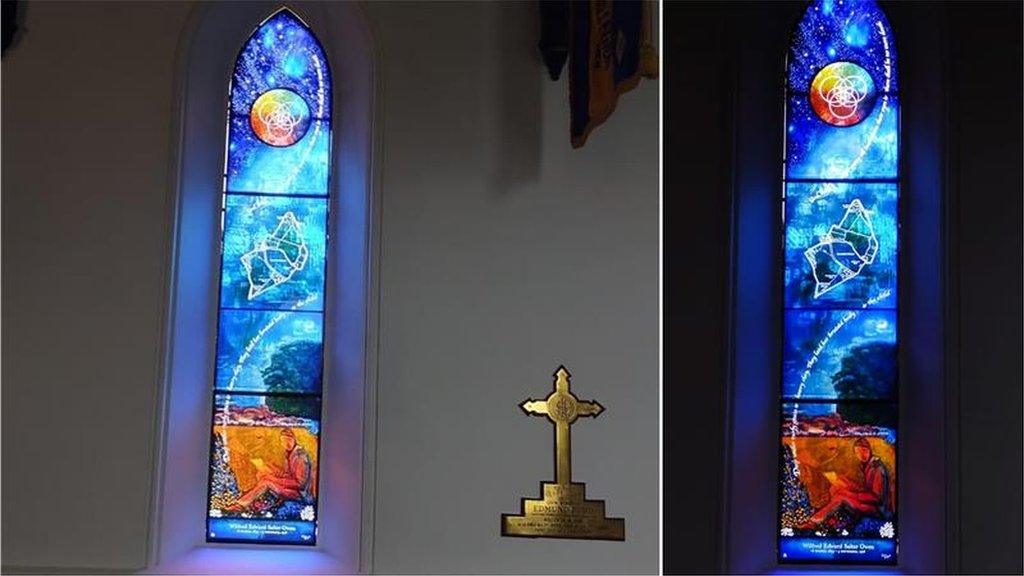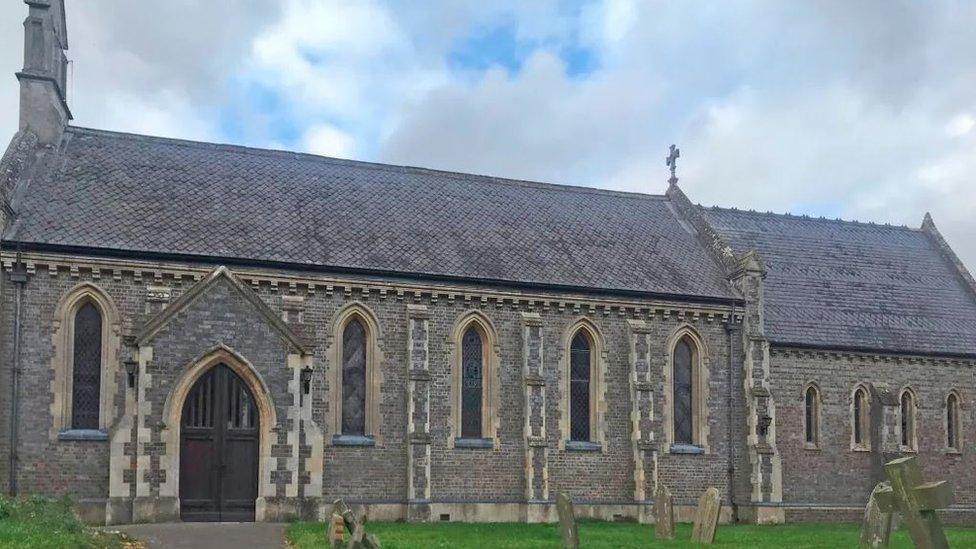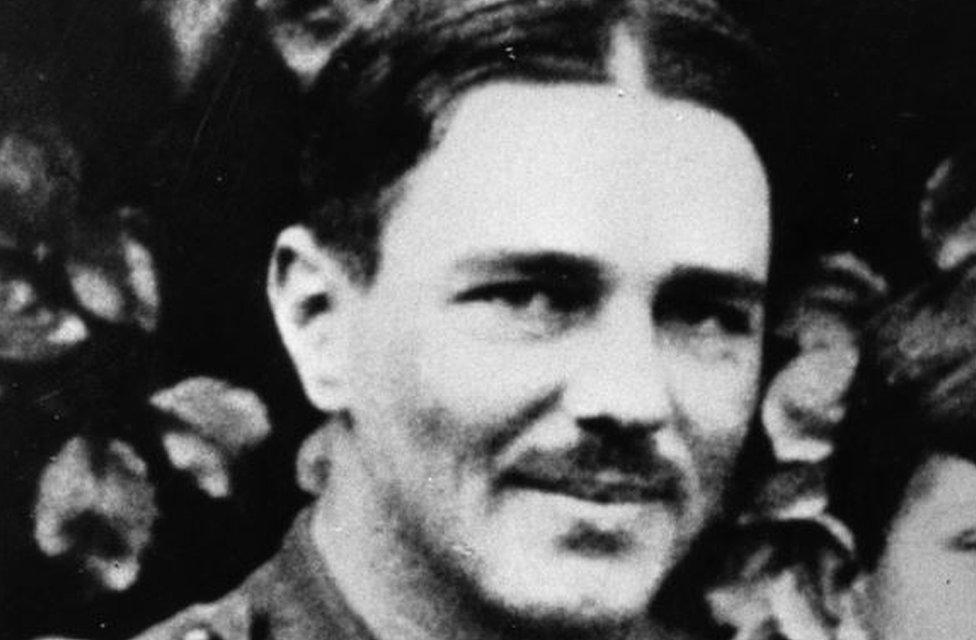War poet Wilfred Owen honoured with Oxfordshire glass window
- Published

The window will be officially dedicated at a ceremony on 4 November
A stained glass window has been installed in a church to commemorate World War One poet Wilfred Owen.
The art piece was installed at All Saints Church in Dunsden Green, Oxfordshire, where he spent his formative years.
The window was inspired by the poem Deep Under Turfy Grass, a response to a tragic accident in 1912.
It will be officially dedicated at a ceremony on 4 November - the anniversary of his death.
Wilfred Owen was between 18 and 20 years of age during his time in Dunsden Green and his poems reflect people and scenes he knew from the area.
He is best known for his poetry describing the horrors of the battlefields during World War One, detailing trench life and gas warfare.

Ms Redina said: "Creating this design took me across Europe to some of the place Wilfred Owen had lived."
In 1911, he came to the village to be a lay assistant to the vicar and a year later he assisted at the funerals of a mother and child who were killed in a horse-and-cart accident.
The tragedy inspired Owen to write Deep Under Turfy Grass which has inspired the stained glass window, which was installed on Thursday.
Oxford Diocese granted All Saints Church the faculty to install the art piece, following a successful fundraising campaign by local people.
Church vicar Robert Thewsey, with the active support of the congregation, has supported the Dunsden Owen Association with the crowdfunding.
Artist Natasha Redina was appointed to design the window after winning the 2022 Design Award in the Glaziers Company's annual stained glass window design competition.
Ms Redina said: "I did the Wilfred Owen trail, first of all because I really like to immerse myself in the subject that I'm working with, so I walked around the church then I came inside.
"As I walked I saw the mud, the kites that were flying around and just local fauna and flora and I took all that in, then included it in my work."

Oxford Diocese has granted All Saints Church the faculty to install the art piece
This window art is divided in three perspectives - Divine, Intermediate and Earthly - featuring symbols and colours that depict the circle of life and death.
Ms Redina said: "I chose to do was use mouth blown glass, so all the colour you see in the window, none of it is painted on.
"It's all done using traditional techniques - two layers of glass, one layer of blue and one of red, then I've added silver stain and when it's fired in the kiln it turns yellow."
Similar themes of healing were threaded throughout many of the other windows in the church.
Owen was killed in action in France, aged 25, a week before the signing of the Armistice in 1918.


Who was Wilfred Owen?
Wilfred Edward Salter Owen was born on 18 March 1893, in Oswestry, Shropshire
He attended Reading University College briefly in 1912, where he studied botany and poetry
Wilfred Owen is regarded by many as the greatest poet of World War One, with some of his best known poems being Anthem for Doomed Youth, The Send-Off and Dulce et Decorum Est
In 1917 he saw his first action in France, in which he and his men were forced to hold a flooded dugout in no man's land for 50 hours while under heavy bombardment
He was awarded the Military Cross for bravery at Amiens, but was killed on 4 November while attempting to lead his men across the Sambre Canal at Ors. The news of his death reached his parents on 11 November 1918, the day of the Armistice

Follow BBC South on Facebook, external, X, external, or Instagram, external. Send your story ideas to south.newsonline@bbc.co.uk.
Related topics
- Published14 August 2023

- Published11 February 2023

- Published5 August 2018
